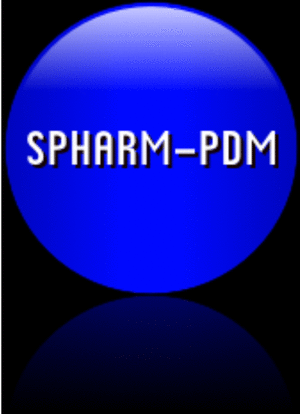Difference between revisions of "UNC SPHARM-PDM Tutorial"
| (15 intermediate revisions by the same user not shown) | |||
| Line 1: | Line 1: | ||
| − | [[Image:SPHARMPDM_Logo.gif | + | [[Image:SPHARMPDM_Logo.gif |SOME OUTPUTS: Triangular mesh representation of the input segmentation - The first triangular mesh,mapped in the sphere - Spherical representation of the harmonic representation of the input parameterization - DistanceMap colorMap(after MANCOVA) and Particle |300px|thumb|right]] |
| − | = | + | = ShapeAnalysisModule= |
| − | |||
==Overview== | ==Overview== | ||
| − | SPHARM-PDM is a tool that computes point-based models using a parametric boundary description. The | + | Shape analysis has become of increasing interest to the medical community due to its potential to precisely locate morphological changes between healthy and pathological structures. SPHARM-PDM is a tool that computes point-based models using a parametric boundary description for the computing of Shape analysis. |
| − | * '''Step by step analysis''': With the ShapeAnalysisModule tutorial,you will learn how to load input volumes, run the module to generate triangulated surfaces with inherent correspondences and visualize them thanks to an intuitive quality control. | + | The point-based models computed with the SPHARM-PDM tool can be used in combination with the also UNC designed statistical tool |
| − | + | [[UNC MANCOVA Tutorial| shapeAnalysisMANCOVA]] to perform quantitative morphological assessment of structural changes at specific locations. | |
| + | * '''Step by step analysis''': With the ShapeAnalysisModule tutorial,you will learn how to load input volumes, run the module to generate triangulated surfaces with inherent correspondences and visualize them thanks to an intuitive quality control. Indeed,compared with previous versions, the ParticleModule is now part of ShapeAnaysisModule. | ||
| Line 17: | Line 17: | ||
'''ShapeAnalysisModule tutorial''' : to perform structural shape analysis.[[Media:ShapeAnalysisModule-Tutorial.ppt| [ppt]]][[Media:ShapeAnalysisModule-Tutorial.pdf| [pdf]]] | '''ShapeAnalysisModule tutorial''' : to perform structural shape analysis.[[Media:ShapeAnalysisModule-Tutorial.ppt| [ppt]]][[Media:ShapeAnalysisModule-Tutorial.pdf| [pdf]]] | ||
| − | |||
| Line 32: | Line 31: | ||
'''ShapeAnalysisModule data ''': | '''ShapeAnalysisModule data ''': | ||
| − | * | + | *[http://www.nitrc.org/docman/index.php?group_id=308&selected_doc_group_id=760&language_id=1#folder Link to NITRC ] |
| − | * or directly [[Media:ShapeAnalysisModuleTutorialData_TutorialContestSummer2011.zip| | + | * or directly here :[[Media:ShapeAnalysisModuleTutorialData_TutorialContestSummer2011.zip| ShapeAnalysisModuleTutorialData_TutorialContestSummer2011.zip]] |
| − | |||
| − | |||
| − | |||
==Complementary documentation== | ==Complementary documentation== | ||
| − | |||
* Joshua Cates, Manasi Datar, P Thomas Fletcher and Ross Whitaker, [https://gforge.sci.utah.edu/gf/project/shapeworks/frs/?action=FrsReleaseBrowse&frs_package_id=4 ShapeWorksManual] | * Joshua Cates, Manasi Datar, P Thomas Fletcher and Ross Whitaker, [https://gforge.sci.utah.edu/gf/project/shapeworks/frs/?action=FrsReleaseBrowse&frs_package_id=4 ShapeWorksManual] | ||
| + | * Martin Styner, Ipek Oguz, Shun Xu, Christian Brechb¨hler, Dimitrios Pantazis, Guido Gerig, [http://www.google.com/url?sa=t&source=web&cd=1&ved=0CBsQFjAA&url=http%3A%2F%2Fciteseerx.ist.psu.edu%2Fviewdoc%2Fdownload%3Fdoi%3D10.1.1.123.4306%26rep%3Drep1%26type%3Dpdf&rct=j&q=Statistical%20Shape%20Analysis%20of%20Brain%20Structures%20using%20%20%20%20%20%20%20%20%20%20%20%20%20%20%20%20%20%20%20SPHARM-PDM&ei=pi3pTYBWw-DRAbr-5bcB&usg=AFQjCNGrxZqRx0o11lMsULIPCJI6J728Gw&sig2=VzPjzlOFiwiOw3UJmOFgJQ Statistical Shape Analysis of Brain Structures using SPHARM-PDM] | ||
==People== | ==People== | ||
Latest revision as of 15:38, 13 June 2011
Home < UNC SPHARM-PDM Tutorial
Contents
ShapeAnalysisModule
Overview
Shape analysis has become of increasing interest to the medical community due to its potential to precisely locate morphological changes between healthy and pathological structures. SPHARM-PDM is a tool that computes point-based models using a parametric boundary description for the computing of Shape analysis. The point-based models computed with the SPHARM-PDM tool can be used in combination with the also UNC designed statistical tool shapeAnalysisMANCOVA to perform quantitative morphological assessment of structural changes at specific locations.
- Step by step analysis: With the ShapeAnalysisModule tutorial,you will learn how to load input volumes, run the module to generate triangulated surfaces with inherent correspondences and visualize them thanks to an intuitive quality control. Indeed,compared with previous versions, the ParticleModule is now part of ShapeAnaysisModule.
Tutorials
ShapeAnalysisModule tutorial : to perform structural shape analysis. [ppt] [pdf]
Software
Slicer3 External modules -including BatchMake Description files
Tutorial materials
ShapeAnalysisModule data :
- Link to NITRC
- or directly here : ShapeAnalysisModuleTutorialData_TutorialContestSummer2011.zip
Complementary documentation
- Joshua Cates, Manasi Datar, P Thomas Fletcher and Ross Whitaker, ShapeWorksManual
- Martin Styner, Ipek Oguz, Shun Xu, Christian Brechb¨hler, Dimitrios Pantazis, Guido Gerig, Statistical Shape Analysis of Brain Structures using SPHARM-PDM
People
Lucile Bompard
Clement Vachet
Beatriz Paniagua
Martin Styner
